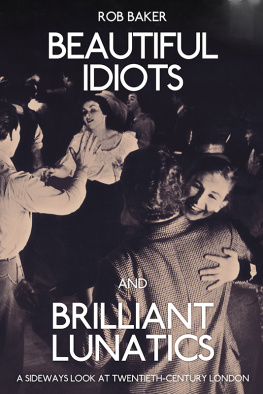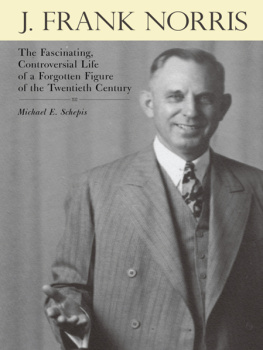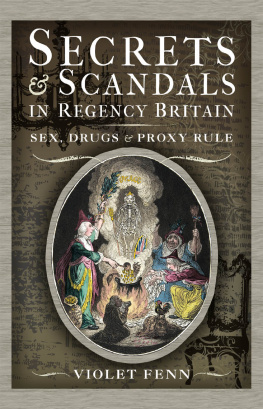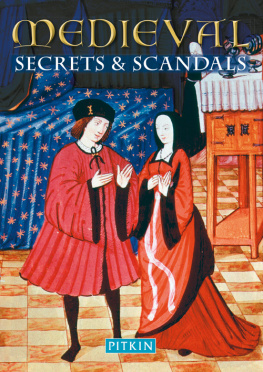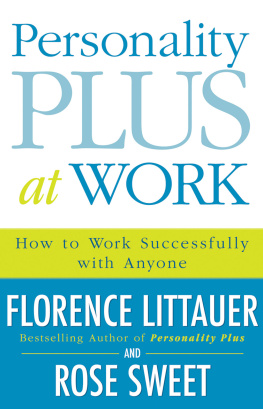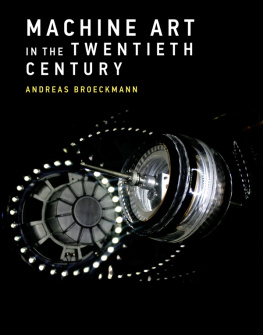Rob Baker - Beautiful Idiots and Brilliant Lunatics
Here you can read online Rob Baker - Beautiful Idiots and Brilliant Lunatics full text of the book (entire story) in english for free. Download pdf and epub, get meaning, cover and reviews about this ebook. year: 2015, publisher: Amberley Publishing, genre: History. Description of the work, (preface) as well as reviews are available. Best literature library LitArk.com created for fans of good reading and offers a wide selection of genres:
Romance novel
Science fiction
Adventure
Detective
Science
History
Home and family
Prose
Art
Politics
Computer
Non-fiction
Religion
Business
Children
Humor
Choose a favorite category and find really read worthwhile books. Enjoy immersion in the world of imagination, feel the emotions of the characters or learn something new for yourself, make an fascinating discovery.
Beautiful Idiots and Brilliant Lunatics: summary, description and annotation
We offer to read an annotation, description, summary or preface (depends on what the author of the book "Beautiful Idiots and Brilliant Lunatics" wrote himself). If you haven't found the necessary information about the book — write in the comments, we will try to find it.
Beautiful Idiots and Brilliant Lunatics — read online for free the complete book (whole text) full work
Below is the text of the book, divided by pages. System saving the place of the last page read, allows you to conveniently read the book "Beautiful Idiots and Brilliant Lunatics" online for free, without having to search again every time where you left off. Put a bookmark, and you can go to the page where you finished reading at any time.
Font size:
Interval:
Bookmark:

For Olly
First published 2015
Amberley Publishing
The Hill, Stroud
Gloucestershire, GL5 4EP
www.amberley-books.com
Copyright Rob Baker 2015
The right of Rob Baker to be identified as the Author of this work has been asserted in accordance with the Copyrights, Designs and Patents Act 1988.
All rights reserved. No part of this book may be reprinted or reproduced or utilised in any form or by any electronic, mechanical or other means, now known or hereafter invented, including photocopying and recording, or in any information storage or retrieval system, without the permission in writing from the Publishers.
British Library Cataloguing in Publication Data.
A catalogue record for this book is available from the British Library.
ISBN 9781445651194 (PRINT)
ISBN 9781445651200 (eBOOK)
Typeset in 10.5pt on 14pt Sabon.
Typesetting and Origination by Amberley Publishing.
Printed in the UK.
Thank you to the following for your inspiration, help and support: Beth Blunt (mum), Chris Bunton, Chris Cocks, Connor Stait, David Hepworth, Danny Baker, Ewa Scibor-Rylska, Helen Baker, Jane Awford, Jenny Stephens, Jill Shapiro, Justin Bairamian, Lindsay Smith, Louis Archard, Luca Leonard, Mary Baxandale, Mary OKane, Merlin Crossingham, Michael Burke, Miles Leonard, Paul Sorene, Bob Stanley, Peter Watts, Richard Gardner, Robert Ross and Wilfred Bairamian.

Bobby Britt, Constance Carre and friends at the time of their arrest at Britts flat on Fitzroy Square, 16 January 1927.
At one in the morning on 16 January 1927, Superintendent George Collins of the Metropolitan Police knocked on the door of the basement flat at 25 Fitzroy Square. A woman called Constance Carre answered, and was told that there was a warrant to arrest the occupants. Carre responded: But Mr Britt was going to give us a Salome dance!
The superintendent and his fellow officers barged past her and quickly entered the flat. They came across a twenty-six-year-old man who was wearing, as a police report would later describe, a thin black transparent skirt, with gilt trimming round the edge and a red sash tied round his loins. The same report added that he wore ladys [sic] shoes and was naked from the loins upwards.
The oddly attired man gave his name as Robert Britt and said:
I am employed in the chorus of Lady Be Good!. These are a few friends of mine. I was going to give an exhibition dance when you came in. I have been here for about eight months and pay two pounds five shillings weekly for the flat. Carre is my housekeeper. I was a Valet to a gentleman for about nine years who died last November. I did not like that sort of life, so as Im considered good at fancy dancing I decided to go on stage Some of the men I have known for a long time and they bring along any of their friends if they care to do so.
It eventually came to light that the police had been staking out Britts flat for a month or so. Sergeant Spencer and Police Constable Gavin of D division had spent 16 and 17 December 1926 and 1 and 2 January 1927 essentially peering into the abode from the front and rear of the property. They noted the activities during various parties that Robert Britt held at his flat. Police Sergeant Arthur Spencer wrote: At 11.45 p.m. I saw two men, who I saw enter at 11.30 p.m., leave, they were undoubtedly men of the Nancy type. They walked cuddling one another to Tottenham Court Road, where they stood waiting for a bus. I stood close to them and saw their faces were powdered and painted and their appearance and manner strongly suggested them to be importuners of men. Police Constable Gavin contributed to the report: I saw from the roof into a bedroom in the basement, where two men entered the bedroom; they both undressed and got into bed and the light was put out. I heard them laugh and scream in very effeminate voices.
Londoner Bobby Britt, the youngest of four children, had been born in Camberwell at the turn of the century. As he mentioned to the police when they raided his flat, he was performing at the Empire Theatre in the dancing chorus of Lady Be Good!, the Gershwin brothers first Broadway musical, which starred the brother-and-sister team of Fred and Adele Astaire. The musical had been a huge success in New York and on 14 April 1926 had transferred to the Empire Theatre in Leicester Square, to perhaps even greater acclaim. In the end the comedy musical ran for 326 performances. Bobby Britt was dancing in easily the hottest show in town.
The Empire Theatre had opened in April 1884, on the north side of Leicester Square, as a variety theatre but also as a ballet venue, and had room for 2,000 seats. It had been built on the site of the historic Savile House which had been destroyed by fire in 1865. Savile House was notorious in its time for its tableaux vivants, or living pictures, which featured frozen-moment representations of well-known paintings where seemingly half-naked young men and women stood statue-like, and which included the fleshly embodiment of A Night with Titian or Venus Rising from the Sea. The Empire had been designed in 1882 in the French Renaissance style by the highly reputed London architect Thomas Verity whose design included two large promenades which enabled people to stroll up and down while watching the stage below.
The first performance at the theatre was Chilprie with music by Herv and described as a grand musical spectacular with a fifty-strong corps de ballet. In 1887 the Empire was reopened as a popular music hall and renamed as the Empire Theatre of Varieties. In the early part of the twentieth century, the dancer Adeline Gene and the ballet company working under composer and director Leopold Wenzel were responsible for reviving the art of ballet in Britain, which had been steadily declining during the preceding century.
Exactly forty-four years after the Empire opened, almost to the day, Lady Be Good! opened at the Leicester Square venue. George Gershwin attended the opening night and huge crowds came to the theatre, just to stand outside. Later, with the Astaires, the composer partied at the fashionable Embassy Club on Old Bond Street, where he stayed until eight in the morning. The Embassy had opened in 1919 and had soon become the fashionable place to go after the Prince of Wales had become a regular (a couch was reserved specifically for his use). The music for the first-night party was provided by Ambrose and his Orchestra, who were back playing regularly at the nightclub after a lucrative period performing in New York. They had been persuaded back to London by a telegram from the Prince of Wales himself: The Embassy needs you. Come back Edward.
The reviews for Lady Be Good! were generally enthusiastic, especially as far as the Astaires were concerned. The Manchester Guardian, writing about the opening night, was initially worried that the audience may have been puzzled with the title as none of the numerous ladies involved in the plot were in the least in need of being told how to behave. The reviewer enjoyed the performances of the Astaires, but thought that Mr Gershwins music is rather disquieting. He has very little that is either new or captivating to say.
The Astaires had been a successful vaudeville act since 1905, and in 1926, when they both travelled to London to appear in
Font size:
Interval:
Bookmark:
Similar books «Beautiful Idiots and Brilliant Lunatics»
Look at similar books to Beautiful Idiots and Brilliant Lunatics. We have selected literature similar in name and meaning in the hope of providing readers with more options to find new, interesting, not yet read works.
Discussion, reviews of the book Beautiful Idiots and Brilliant Lunatics and just readers' own opinions. Leave your comments, write what you think about the work, its meaning or the main characters. Specify what exactly you liked and what you didn't like, and why you think so.

